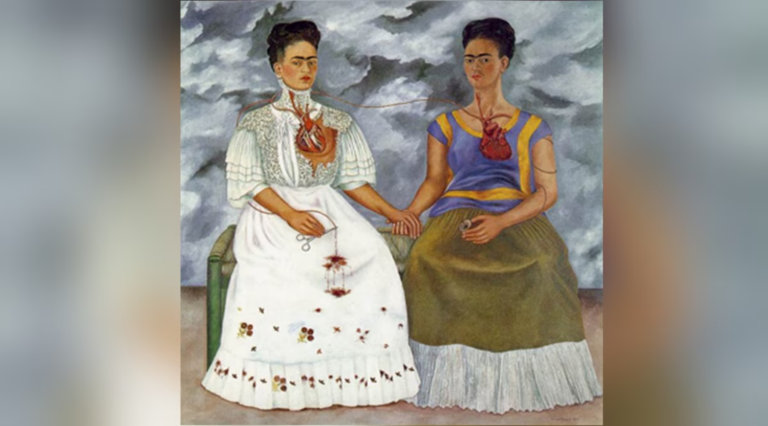
Delhi-based artist Kanchan Chander on what makes Frida Kahlo’s 1939 artwork ‘The Two Fridas’ essential viewing
Since my days as an art student, Frida Kahlo has been a profound source of inspiration for me, not only as an artist but also as a formidable personality. The biographical film depicting her life left an indelible impact on me.
Born to parents of German and Mexican descent and wedded to the renowned Mexican artist Diego Rivera, Frida Kahlo’s life was marked by physical pain and personal turmoil, which only served to fortify her inner strength, evident in her art. Overcoming childhood polio and enduring numerous serious surgeries, she confronted battles with depression and anxiety. Yet, her unwavering willpower drove her to create art, even from the confines of her hospital bed.

In an era when most women were confined to domestic responsibilities, Kahlo stood defiantly independent. She fearlessly depicted daring subjects in her art, providing a glimpse into her struggles as both a woman and an artist. Some of her notable works, housed in museum collections worldwide, include “Henry Ford Hospital” (1932), “Self-Portrait with Thorn Necklace and Hummingbird” (1940), and “The Broken Column” (1944).

One poignant piece, “The Two Fridas,” captures a sense of sadness and heartbreak. Painted immediately following her divorce from Rivera, the artwork features two women seated on a bench—one donned in a bridal dress and the other in a vibrant Tehuana dress. Both figures possess a heart; while one heart is whole, the other is exposed. The figure in the bridal dress holds surgical scissors, blood dripping down. Despite leading a profoundly unhappy life, Kahlo’s paintings were characterized by vibrant and bright colors—perhaps a way of concealing her sorrows. Tragically, her life was cut short, and she passed away at the age of 47.
In 2008, I embarked on a series titled “Frida and Me,” dedicated to Kahlo. Envisioned as a conversation between the two of us, the series integrates our photographs into mixed-media paintings and collages, paying homage to the enduring influence of this remarkable artist.